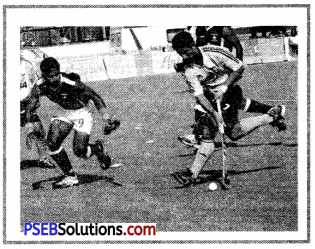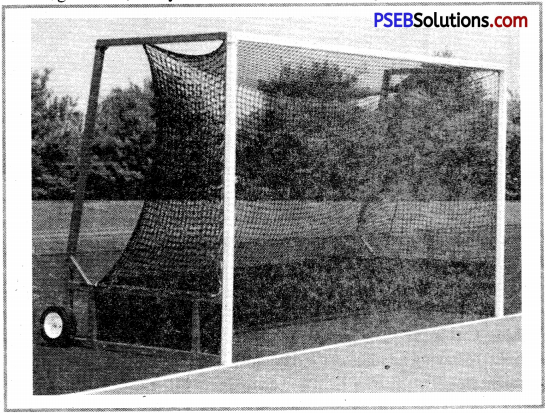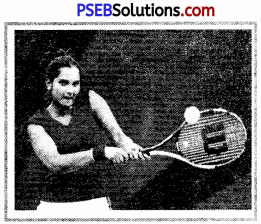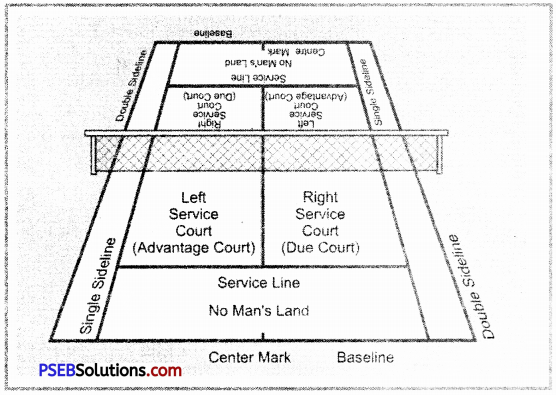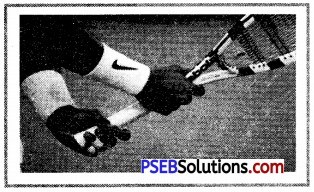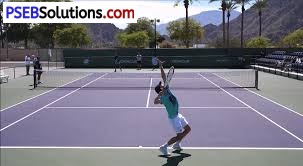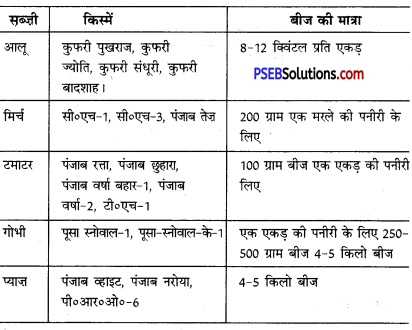PSEB Solutions for Class 10 Welcome Life Source Based Questions
Question 1.
Change is the law of nature. As it is well said that flowing water never goes stale. Human nature is also just like the same. If a person does not have a flexible attitude, he/she can never adapt himself herself to the environment. A narrow-minded person is never happy. Such a person becomes toxic and spreads negativity all around. Besides this, that person fails to maintain relations with others because he/she is never ready to welcome wholeheartedly others’ viewpoints and criticism for his own ideology. A flexible attitude, therefore, is a very necessary trait to be developed in the individual for a healthy adjustment with others.
1. What is human nature like?
Answer:
Human nature is changeable which keeps on changing with time.
2. What is the disadvantage of narrow-mindedness?
Answer:
A narrow-minded person spreads negativity everywhere and never remains happy.
3. How does a narrow-minded person maintain a relationship?
Answer:
A narrow-minded person cannot maintain relationships well as he is never ready to accept others’ points of view.
4. What type of thinking should we keep?
Answer:
One must keep positive thinking and must remain away from negative ideas. He must not live with narrow-mindedness but live with a positive attitude.
5. What is the need for a flexible attitude?
Answer:
A person with flexible attitude makes healthy adjustment with others and never have sour relations with them.
![]()
Question 2.
In the age of the modem information revolution, the means of communication and their role has been increased tremendously. Information, knowledge, and entertainment are obtained through these means. But the main purpose of most of the companies, institutions, or organizations that run these resources is also to make money. In such a situation they are providing all kinds of content; Whether it is for the good of humanity or not. In the present age, every human being has access and capability to use the internet and means of communication. Therefore, it is our duty to make proper use of these resources to develop our knowledge. Children have less ability to find right/wrong and therefore this fear persists due to misuse of the internet or other means of communication. The main purpose of this activity-based lesson is to develop this habit/interest in the students so that they understand how to use these tools properly.
1. What type of age is present age and why?
Answer:
The present age is known as the age of information revolution because they have reduced the distance in the world quite dramatically.
2. Whose importance has increased in the modem age?
Answer:
The importance of information technology has increased in the modem age.
3. What is the main objectives of those who run means of communication?
Answer:
The main objective of those who run means of communication is to make money and earn profit.
4. What is our duty?
Answer:
It is our duty to make proper use of means of communication and develop our knowledge.
5. What is the advantage of activity-based lessons?
Answer:
It helps the students to understand how to use the tools properly and develops a habit among them to understand everything very quickly.
![]()
Question 3.
Madam Kamla told the girls that they had a lot of misconceptions that need to be avoided: as some people take medicines to stay awake till night, some are taking extra products to make their body much healthier and muscular, some posts on social media are misleading the young generation. Actually, these advertisements are promoted by companies and they are not part of a T.V. channel. There is written ‘disclaimer’, advertisement on them. So, we should not blindly believe it. In such advertisements and we should think critically. So in nutshell, we should believe in hard work and a homemade healthy diet which should be a simple and balanced diet. Madam also gave examples of Milkha Singh, P.T. Usha, Deepika Karmakar, Leander Pace, Marriecom, and many other players who raised them up from ordinary or poor families and shined well in the world.
1. What kind of misconceptions do people make?
Answer:
People make misconceptions that by consuming medicine and tonics, we can become healthy and strong.
2. Do we have to trust the advertisements of companies?
Answer:
We must not blindly believe in the company advertisements. We should think critically about it and must not be misled by such advertisements.
3. Give some examples of sportspersons who achieved great heights only with hard work.
Answer:
Milkha Singh, P.T. Usha, Deepika Karmakar, Leander Pace, Marriecom, and many other players achieved great heights with hard work.
4. What should we do to achieve great heights?
Answer:
To shine and achieve heights, we must do hard work and must not consume medicine and tonics.
5. What is a ‘disclaimer’ written on advertisements?
Answer:
Because T.V. channels are only showing advertisements on the behalf of the manufacturer. They have nothing to do with manufacturing or faulty products.
![]()
Question 4.
There are some social boundaries about our relations. They tell us to what extent we should keep our relationships. We are not supposed to violate these limits and boundaries. These social rules make a setup that is known as a social setup. Our family or neighbors, school/college teachers, students, friends almost every person in the world make us realise the socially well-defined boundaries and limitations of relationships at every stage of life. So we should observe and follow them with a logical approach. We should not violate such boundary otherwise we may have to murder any other relationship. So there is a limit which marks a social grace; as some relations are to be kept at home, on the other hand, some are limited to our office or any other workplace. Therefore it’s not wise to bring our outer relationships (workplace relationships or professional relations) to our home and vice versa. Some relations are blood relations which are known very close to us but it is not always the same. Sometimes, a relation that is not a blood relation helps us more and is ‘ closer to us than the blood relations.
1. Who fixes the limits of our relationships?
Answer:
Society fixes the limits of our relationships that how much far we need to go in any relationship.
2. What should we do with social limitations?
Answer:
We must follow and observe them with a logical approach that we should remain within social limitations.
3. How can we identify close and far-off relationships?
Answer:
Close and far-off relationships can be identified by our instinctive love and sensitivity.
4. What is the limitation of relationships?
Answer:
There is always a limitation of every relationship that how much far we need to go in every relationship. That’s why we must understand their limitation and live a better life.
5. Why is it not wise to bring outer relationships to our home?
Answer:
We must not bring outer or office relationships to our home because it can create problems in our other relationships. Family members can oppose it and can have adverse effects on our homely relationship.
Question 5.
In life, every person lives with many relationships. Some relations are life long but some are to be cut down or some relations break up with the effect of time and circumstances. So it remains as a memory, good or bad in any corner of our mind perhaps throughout life. Some relations are breakup by ego, fear, anger, or social helplessness. Sometimes we have to go away to start a new life and for this, we have to end up our relationship. Sometimes we feel that we cannot go for a long time with someone else so we cut our relations. We should end up our relationship very constructively and in a graceful manner.
1. Do all relationships last a lifetime?
Answer:
No, all relationships do not last a lifetime. Few relationships are to be cut down midway.
2. Why do we have to leave relationships?
Answer:
Some relationships are to be cut down due to anger, fear of social restrictions, or to start a new life at some other place.
3. How should we leave relationships?
Answer:
If we need to leave a relationship, we need to end up in a constructive and graceful manner.
4. Why do relationships remain in memory?
Answer:
We end a particular relationship but they remain in memory because of any good or bad moment.
5. Why do we feel that few relationships will not be lost for long?
Answer:
Because at one stage of life, we start to realize that such relationships are not faithful and it’s better to end up that relationship instead of taking it for long.
![]()
Question 6.
Understand, if you want to treat everyone in a fairly, respectful manner. We should have the quality of sensitivity. We all have to look at it with love and respect, with the eyes of equality. So boys and girls-men and women have to treat each other fairly with respect and equality. In this way, the meaning of the word ‘pain’ is limited – one’s own pain. In the same way, the meaning of ‘Sympathy is to understand the collective pain of all. If we look at our home, siblings often complain that their parents treat their sisters and brothers better than they do. Even at school, boys often complain about why girls are being monitored in class? So issues like this are really an indication of our lack of gender sensitivity.
1. What is the equality of sensitivity?
Answer:
While living in society, we treat everyone in a fairly and respectful manner. This is the quality of sensitivity.
2. What is meant by pain and sympathy?
Answer:
The limited meaning of ‘pain’ is one’s own pain and the meaning of sympathy is to understand the collective pain of all.
3. What complain do we have with our siblings?
Answer:
We often have complained about siblings that parents have more to them and do less love to us.
4. How do we behave properly?
Answer:
We must give respect to all and treat them equally to behave properly.
Question 7.
Dear students, needs and desires are very important in our life but they should not exceed their limits. They should not be so too many that it will be difficult to live a simple life within our means. Desires should be kept within a social boundary. Food, clothes, and home are basic necessities, in the same way, a good lifestyle is also of some importance. Let us see, of which type our needs and desires are? Whether they are limited or they are much more and exceeding all means and sources? Are they teasing our parents or not?
1. What is required to live life?
Answer:
Needs and desires are required to live life. We cannot live without these.
2. To what extent, desires should be kept?
Answer:
Desires should be kept in a social boundary so that they can easily be fulfilled.
3. Which things are necessary to five life?
Answer:
Food, clothes and shelter are required to live life as we cannot live without them.
4. What should we keep in mind while keeping desires?
Answer:
While having a wish, we should keep in mind that they must not tease our parents. In this case, they will become a burden on our parents.
5. Why needs and desires are important in life?
Answer:
Because everyone needs certain things to “live life and to live a happy life, desires are also important. Without desires, development cannot take place.
Question 8.
Every human being in the world is different. We are different from each other in many ways, just like that Everyone has a different personality. It is important for mutual respect that we treat each other in the same way. Acknowledge what their personality is different relationships are a blessing for us. We often see that the personalities of two good friends are often different. One speaker and the other listener. In this way, our diversity is complementary to each other. When we accept each other, we also learn a lot from them. If we think of ourselves as right and others as wrong, we will be left alone. Friendship is especially important in student life. Accept the friend in his or her full form. Everyone’s reaction to the same situation is different. When a student is pointed out in the class, one should understand and make changes in his / her ways. Someone else gets angry and deliberately misbehaves, while, someone is completely silent. Our problem is that we want everyone to change according to us. This is not fair. They behave differently.
1. What is of great importance in student life?
Answer:
Friendship is of great importance in student life as they remain with us without any selfishness and we remember them for the whole of our life.
2. How is everyone different from each other?
Answer:
Everyone is different from each other from the point of view of physical appearance. Their habits, personality, and abilities are also different. That’s why everyone is different from each other.
3. What is necessary for mutual good relations?
Answer:
For mutual good relations, it is a must that we should accept others as they are and according to their personality. It helps in maintaining relations of equality.
4. What is the importance of differences in our lives?
Answer:
Differences are of great importance. Everyone is different from each other and we accept them as they are. Even after having many differences, we do not discriminate against them.
5. Why personalities of two good friends are different from each other?
Answer:
Although they are good friends, their outlook ideas, views, habits, ways of living are different from each other. That’s why their personalities are also different.
![]()
Question 9.
Creative thinking means that we have a tendency to do something new, unique, and original. In a human being with a creative mindset, there are always new ideas and the way to express those ideas is also unique. Different human beings have different traits and qualities. A person with a creative mindset uses this quality to develop himself and also gain social respect. Creative focus can be found not only in the field of art or literature but also in people associated with any field. By developing this attitude in the students, their personality should be refined and their nature should be made creative by making proper use of their energy.
1. What is meant by creative thinking?
Answer:
The meaning of creative thinking is a tendency in an individual to do something new, unique, and original.
2. What is the advantage of creative thinking?
Answer:
A person with creative thinking uses this quality to develop himself and also gain social respect. He tries to create something new.
3. Can this creative thinking occur in any field?
Answer:
Yes, creative thinking can occur in any field such as art, literature, science, etc.
4. What is the advantage of developing creative thinking among students?
Answer:
By developing creative thinking among students, their personalities can be developed. Their nature can be made creative by making proper use of their energy.
5. Why everyone should have creative thinking?
Answer:
Every individual is creative in one way or the other. He always wants to create something unique. To create something unique, creative thinking is very much necessary.
Question 10.
It is normal if we feel sad, scared, nervous, restless, angry, jealous, or distress at times, but if this happens often, it becomes essential to control these feelings. If our emotions get out of control, these can prove to be detrimental and may affect our physical health, mental health, family relationships, and social dealings. So we should learn to control our emotions to avoid committing mistakes by being excessively emotional and then regret later. We can be bright and successful students by introspection and analysis of our emotions, by understanding these and channelizing these properly because the balance of emotions plays a significant role in our lives as our physical well-being, mental health, family bondings, and social interactions are all linked to emotional balance. Balancing emotions means that we need to be fully aware of when and how much to express. We must set a limit to how we can express our feelings.
1. Why should we control our feelings?
Answer:
We need to control our emotions such as anger, jealousy, scaredness or it can create many problems for us.
2. How can we become successful students?
Answer:
We can become successful students by introspection and analysis of our emotions, by understanding these and channelizing them properly.
3. What is meant by the balance of emotions?
Answer:
Balancing emotions means that we need to be fully aware of when and how much to express.
4. Why should we learn about keeping emotions in control?
Answer:
We should learn about keeping emotions in control so that under the influence of emotions, we must not make a mistake that can become a problem later on.
5. Why is it normal when we feel sad, nervous, angry, etc.?
Answer:
It is because of human nature that at different times feels, sad, nervous, angry, jealous, or even distressed. It also depends upon the swing of our mood according to which different emotions occur in us.
Punjab State Board PSEB 10th Class Welcome Life Book Solutions Source Based Questions and Answers.

